Fly Tying

Simple Flies - Myakka Minnow Two Ways
The Mighty Myakka Minnow was born out of frustration. I’m sure you’ve been there. Imagine a day on the water with fish busting minnows throughout the morning. But after several hours, you still have nothing to show for your efforts. You cast into the spray of minnows, but your offerings are ignored repeatedly.

Getting Started on Preserving Skins
Guest Blogger: Joe Dellaria, Woodbury MN
Over the years I have made friends with numerous people who hunt bi...

Tying for Teeth: Tying Flies for Pike
As the air crisps, the leaves start changing color, and the baitfish abound, fall creeps steadily upon the rivers and lakes. The fish start feeding and bulking up as they prepare for the harsh winter ahead. For me this means one thing, the pike rush into the shallows. I love chasing these toothy freight trains as they inhale any meal that happens to be unlucky enough to swim within their territory.
Pike have always fascinated me with their sheer predatory abilities. I have encountered numerous pike sitting with their belly resting on the bottom and a very large sucker sticking out of their mouth. The fish don’t seem to mind as I walk by and watch them try to digest their prey. They just have this mystique about them, as if they can just appear and crush a fly when you are about to recast. They strike with such brutality and speed, it has startled me on more than one occasion. When fall approaches, the bigger fish come out of the depths and vegetation and are center stage for flinging half a chicken’s worth of feathers at these magical freshwater barracudas.

Bad Bug, Good Bug: Tying a Spotted Lanternfly Pattern
There really are no bad bugs, just bad humans. Infestations of Japanese Beetles, Gypsy Moths, Emerald Ash Borers, and a host of other alien invaders are all the result of humans introducing insects to places far removed from their natural range, whether by accident or intent. In the absence of the predators and diseases that normally keep their numbers in check, they can run amok and reproduce explosively.

Variations on a Rock Worm
I couldn’t find any reliable information as to when we anglers started calling the free swimming larva of Rhyacophilidae caddis “Rock Worms”. In late 19th and early 20th century literature, such worms were lumped into a category called “creepers” and there weren’t to my knowledge any specific patterns to replicate them. However, in Montana Flies (Grant, 1981) George Grant gives Franz Potts of Missoula, Montana credit for the term “Rock Worm”.

Cahill Frenchie Fly
The Cahill Frenchie is a pattern that attempts to bridge the gap between jig nymphs and emergers, if such a place exists! At first glance, the inclusion of pale yellow dubbing may appear to be a hot spot or trigger, but there's more than meets the eye. Even better, this pattern can be varied to "match" various mayflies in the waters you fish. Before we get there, let's briefly investigate the fly's design, a variation of the ever popular Pheasant Tail.

Origins of the Blob Fly and Tying the FAB Fly
These rather bizarre fly patterns come to us from the reservoir trout fisheries in the U. K. An Internet search of “Blob Fly” will reveal an array of information on tying these patterns, the materials used, how to fish them, and also a lot of controversy—which is not unexpected.

Mopping Up With the Mop Fly
While I can’t say I’ve exactly “mopped up” with the Mop Fly, I have used it with some success. Like a lot of ugly flies that don’t fit our theories of imitation, but sometimes work very well nevertheless, the Mop Fly has its detractors. If you wouldn’t be caught dead with a Mop Fly on the end of your leader, of course you are under no obligation to use one. On the other hand those of us who are more open-minded are under no obligation not to. All of the wise cracks about the fine line between being open-minded and having a hole in one’s head notwithstanding.

Choosing a Crayfish Fly Pattern
Guest Blogger: Mary S. Kuss, life-long avid angler, licensed PA fishing guide, founder of the Delaware Valle...

Spin a Yarn: A Guide to Fly Tying Yarns
Guest Blogger: Michael Vorhis, author of ARCHANGEL suspense thriller, OPEN DISTANCE adventure thriller &...

Three Methods of Weedless Fly Design
Guest Blogger: John Satkowski, Toledo, OH, fly tying demonstrator and instructor, you can find him @ River R...

Choosing a Style of Fly Tying Scissors
There are so many varieties of fly tying scissors available that choosing a pair can be confusing. We’ll attempt to explain the different styles and shed some light on picking out the right scissors for your needs. As you read this, keep in mind that choosing the right scissors has a lot to do with personal preference. Many styles have the same size blades, but there are some offerings that work a little better for certain situations.

